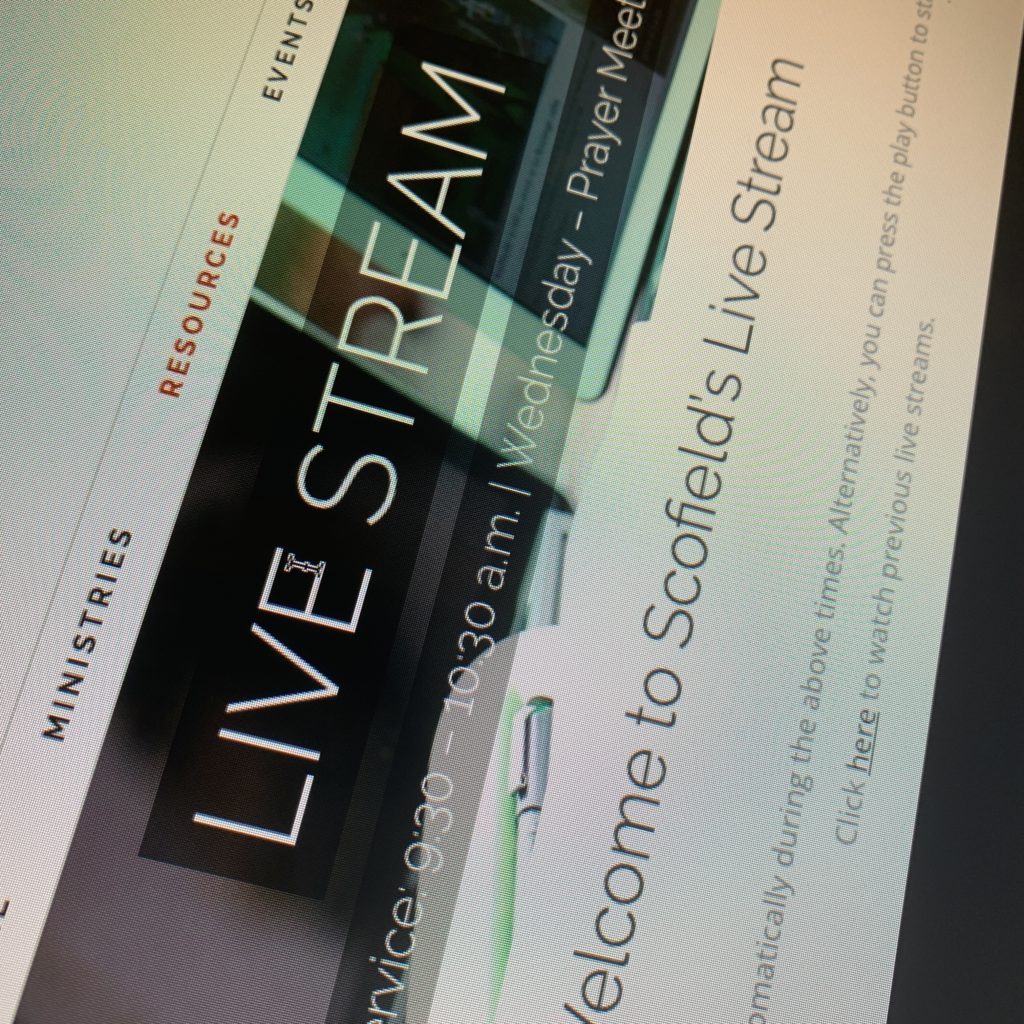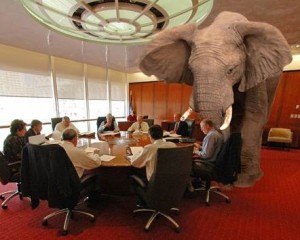 When the infamous COVID-19 pandemic hit in 2020, I got a lot of of questions on what churches should and shouldn’t do in lieu of meeting together for live worship. Of course, eventually this question resolved itself as the current COVID-19 pandemic passed, things returned to normal, and restrictions on meetings were lifted. Yet at the time, this was a pressing question for many people. That pandemic proved to a challenge to many ecclesiologies, and in its wake, how we think about church, the purpose of the in-person gathering, and the role of online options has continued to challenge us. I don’t pretend to have the final answer on these issues, but I do have settled opinions—perspectives informed by my view of the church as a spiritual/physical, heavenly/earthly, visible/invisible reality, my insistence on a truly incarnational (embodied) ministry, and my view of the sacraments of baptism and the Lord’s Supper as vital means of corporate sanctification. The basic DNA of my views on these matters is found in RetroChristianity: Reclaiming the Forgotten Faith as well as throughout this website in various essays on these topics. But in this essay I’d like to address some of the implications for the question of what we should (and shouldn’t) do through remote church meetings.
When the infamous COVID-19 pandemic hit in 2020, I got a lot of of questions on what churches should and shouldn’t do in lieu of meeting together for live worship. Of course, eventually this question resolved itself as the current COVID-19 pandemic passed, things returned to normal, and restrictions on meetings were lifted. Yet at the time, this was a pressing question for many people. That pandemic proved to a challenge to many ecclesiologies, and in its wake, how we think about church, the purpose of the in-person gathering, and the role of online options has continued to challenge us. I don’t pretend to have the final answer on these issues, but I do have settled opinions—perspectives informed by my view of the church as a spiritual/physical, heavenly/earthly, visible/invisible reality, my insistence on a truly incarnational (embodied) ministry, and my view of the sacraments of baptism and the Lord’s Supper as vital means of corporate sanctification. The basic DNA of my views on these matters is found in RetroChristianity: Reclaiming the Forgotten Faith as well as throughout this website in various essays on these topics. But in this essay I’d like to address some of the implications for the question of what we should (and shouldn’t) do through remote church meetings.
Appropriateness of Temporarily Suspending Meetings
First, I believe we may forego assembly in extreme cases. Historically the church has had to forgo gathering for severe plagues and persecutions until it was possible to reconvene meetings. And almost all of us recall instances when weather condition were so treacherous (hurricanes, tornadoes, flooding, ice storms, etc.) that gathering would be dangerous and even deadly. Such extreme scenarios don’t represent a willful and habitual forsaking of the assembly in violation of Hebrews 10:25. Rather, they are temporary, regrettable circumstances that eventually resolve themselves. So, a temporary moratorium on assembly in extreme cases—determined by the local church leadership in wise evaluation of current conditions—is not unreasonable, as long as we begin gathering as soon as we are able and don’t make the exception into the rule.
Reality of Some Members Unable to Attend
In reality, some members of your congregation are unable to attend meetings regularly because of sickness, injury, or frailty. Without this inhibitors, they would be able to be present. Included in this category are those who are “shut-ins,” unable to leave their home or facility, immunocompromised individuals for whom entering certain environments is dangerous, and other unique situations for which meeting is too challenging. In much of church history, those individuals deems willing but unable to attend in-person meetings received frequent (usually weekly) pastoral visits by an elder or deacon, who usually prayed with them, shared the contents of a sermon, read Scripture, and shared the Lord’s Supper with them, taken from the elements of the gathered worship. In these cases, remote participation may provide an additional supplement to help connect and incorporate such members into the live of the church.
Avoiding Extremes
Giving the realities that may prohibit corporate gathering or individual attendance, we need to acknowledge that there are some things we can do remotely and some things we can’t. We face two extremes, I think. On the one end is the position that we can do nothing remotely without physical gathering. On the other end is the view that we can do everything remotely and don’t actually need to gather physically. Both of these go too far. The question we should be asking is not whether we can do some things remotely in lieu of physical assembly but what things can we do remotely?
Yes, We Should Find Alternatives to Meeting
I think it’s clear that I believe that we can and ought to do some things remotely through whatever means is reasonably available to us in lieu of meeting together physically. I am certainly not in favor of permanently replacing physical gathering with online services; I’ve written and taught on this at length over the years. But temporarily turning to various tools to accomplish some things usually done in a corporate gathering is both wise and right, if the circumstances demand it—both corporately in extreme cases and individually in unique circumstances.
What Can Be Done Remotely
The key term is some things. There are certain things that can be done remotely, without a physically gathered community. They can’t be done perfectly, but I think doing these things imperfectly is better than not doing them at all. And though I don’t believe we can do everything imperfectly, I think it’s important that we do some things imperfectly. The Bible itself gives us a few examples of the kinds of things that can be done remotely through some means other than physical presence. In 1 Corinthians 5:3, Paul says, “For I, on my part, though absent in body but present in spirit, have already judged him who has so committed this, as though I were present.” Commentators differ on what Paul means by this. Certainly, he didn’t mean that his spirit was present in some sort of astral projection or out-of-body experience. I think he probably meant simply that through the medium of the letter he was writing, Paul was making his will and words “virtually present.” The reading of the letter took the place of Paul standing there and exercising his apostolic authority. In the same way, church leaders who use various media (letter, email, recorded message, live streaming, etc.) are projecting their words and will and are, in a sense, “present in spirit” though absent in body. In Paul’s letters, he can pray for the church (Phil. 1:9). He can admonish the church (1 Cor. 4:14). He can encourage generous giving (2 Cor. 9:1). And he can relay general instruction, exhortations, corrections, and so forth for the spiritual benefit of the church. In fact, Paul’s quotations of early Christian songs suggests even these can be communicated remotely to some effect (Col. 1:15ff.). I would say all of these things—prayer, teaching, exhorting, encouraging, giving, rebuking, and even songs and praise can and therefore should be done remotely through whatever means a church has available.
Personal Presence Still Preferred
We need to acknowledge that the personal presence and thus physical gathering should be preferred to being merely “present in spirit.” This is clear in the New Testament. The Apostle John, at the close of his second epistle, said, “Though I have many things to write to you, I do not want to do so with paper and ink; but I hope to come to you and speak face to face, so that your joy may be made full” (2 John 1:12). And in the third epistle he said, “I had many things to write to you, but I am not willing to write them to you with pen and ink; but I hope to see you shortly, and we will speak face to face” (3 John 1:13-14). And Paul, Silas, and Timothy communicated to the Thessalonians, “Having been taken away from you for a short while—in person, not in spirit—[we] were all the more eager with great desire to see your face” (1 Thess. 2:17). Some might counter that a synchronous, live video actually fulfills this “face-to-face” desire; but not so fast. Most streamed church services are not “face-to-face” in any case—I can see the presenter, but the presenter cannot see me. Only small groups are able to have actual face-to-face video conferencing for their church services. Most are just the leaders being broadcast to a passive audience observing from the other end of the stream. Thus, they are functionally equivalent to a video epistle. But all this aside, let’s be honest: we all know that physical presence with family members, loved ones, and friends is always preferable to audio or video media, regardless of how interactive the technology. We long for personal presence. It’s how God made us. No video or highly realistic virtual reality can replace personal presence.
What Can’t Be Done Remotely
There are some things that cannot be done apart from personal, physical gathering. Paul wrote to the Romans, “I long to see you so that I may impart some spiritual gift to you, that you may be established; that is, that I may be encouraged together with you while among you, each of us by the other’s faith, both yours and mine” (Rom. 1:11-12). Even though Paul could do many things through his “spiritual presence” by means of the letter to the Romans, communicating his love, his knowledge, and his will through those inspired words, it fell short of a truly incarnational, in-person, one-another ministry. The spiritual gift of mutual edification—exercising the gifts the Spirit for the building up of one another—could only be done in the gathered community (see 1 Cor. 12–14). This is what we mean by the “priesthood of all believers”—not that we are our own priests, but that we are each other’s priests as we exercise our spiritual gifts for the benefit of each other, shoulder to shoulder, face to face, and sometimes back-to-back as we battle against sin, the flesh, and the devil together. It takes the gathered, in-the-flesh assembly for this kind of community.
What About the Lord’s Supper?
Finally, I hate to have to say this, but I strongly believe the sacraments are in this final category. The Lord’s Supper was instituted by Christ as a gathered community realization of true incarnational fellowship. Nothing done online or remotely can even approximate it. It should never be disembodied. The use of video media is by definition not incarnational. I have a good test to determine whether what we’re doing is actually “incarnational”: if you can’t get bruised doing it, it’s not incarnational. “Incarnational” means “in the flesh,” and it necessarily requires physical presence. With regard to the Lord’s Supper in particular, it’s supposed to be the gathered church body partaking of one bread (1 Cor. 10:17). With such an emphasis on partaking of one loaf, there would be no thought of an observance of the Supper without an actual gathering of the body. Paul wrote, “Since there is one bread, we who are many are one body; for we all partake of the one bread” (1 Cor. 10:17). And Paul said to the erring Corinthians, “When you meet together, it is not the Lord’s Supper” (11:20). The implication, of course, is that the gathering together should involve the Lord’s Supper; this makes sense because the proper participation of the Supper as a sign of their union with one another in one body with Christ was the breaking of the one single loaf and sharing of the cup. That we have replaced this sharing of the one loaf with individual crackers and individual cups of juice should not be an excuse for then taking the next step away from Scripture toward an observance of the Lord’s Supper without actually gathering together physically, face-to-face. Paul even urges the Corinthians to “wait for one another” when they come together for the Lord’s Supper (1 Cor. 11:33). Should we not, then, wait for one another to participate in the Lord’s Supper together when we are able again to gather as the church? We would not baptize ourselves or wash our own feet or anoint ourselves with oil and lay hands on ourselves; nor is the family the proper unit of the church within which these acts of the body of Christ should take place. Instead of making a mockery of the Supper by doing it in a way it was never meant to be done, we should forego its observance until we can do it properly. It is entirely possible to observe “the Lord’s Supper” so deficiently that it is not the Lord’s Supper (1 Cor. 11:20). Calling something the Lord’s Supper does not make it so. Doing it as instructed makes it so, and that means “when you come together” (11:20). (Reminder: as mentioned above, the early church rightly administered the Lord’s Supper to “shut-ins”—the sick or frail or imprisoned who were unable to attend the gathered fellowship. In fact, this should still be our practice, as it is in many churches. However, this sharing with the shut-ins should be done from the very Supper that had been shared in the assembly, and it should be done personally and physically by an elder or deacon; it should not be done independently and without a pastoral presence.)
To conclude, during crises or circumstances in which we are not able to meet together, let me encourage all my fellow church leaders to do what you can—and do everything you can—remotely, by whatever means you can do them. Pray for each other, exhort and encourage each other, teach and correct, rebuke and train by remote means. Continue giving to your churches and support them in whatever way you can. But also acknowledge that these things can only be done imperfectly until we are able to do them in person more perfectly. And don’t be tricked into thinking that we can do everything a church is supposed to do apart from a physical gathering. That’s simply not true, especially in the case of those things intended to underscore the incarnation of Christ itself—the sacraments of baptism and the Lord’s Supper.




